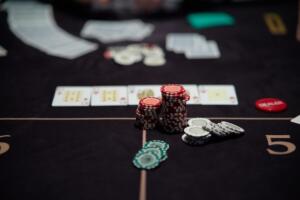Five Solver Strategies That Fail in Real Life
If you’ve spent any time studying with solvers, you know their power. Tools like Upswing’s Lucid Poker can analyze any hand, illustrate your optimal range, and pinpoint your mistakes. However, there’s a catch: solvers operate in a theoretical realm, assuming both players are perfect and fully aware of each other’s strategies. This scenario rarely reflects the reality of your $200 online pool, a 2/5 game at the casino, or your casual Friday night home game.
While solvers are invaluable for grasping poker concepts, some of their strategies can lead to losses in real-world games. In this article, we’ll explore five solver strategies that sound good in theory but often fall short in practice. We’ll also provide practical alternatives to enhance your game.
- At a glance:
- Solvers assume perfect play, which isn’t realistic.
- Many strategies can lead to losses against non-folding opponents.
- Flatting can be more profitable than 3-betting in certain scenarios.
- Understanding opponent tendencies is crucial for maximizing value.
- Adapting strategies to the specific game dynamics is essential.
1. The Flawed Polarized 3-Betting Strategy
One common solver strategy involves 3-betting from the Big Blind with a polarized range. This means including strong hands like Aces and Kings, alongside weaker hands such as offsuit Ace-x and various suited connectors. The theory is that this approach maximizes fold equity while still maintaining a strong flatting range for postflop play.
However, this strategy relies heavily on opponents folding an appropriate amount. In reality, if your opponents are prone to calling 3-bets with hands like ATo or QJo, then hands like A7o or 96s face significant challenges postflop. Instead of sticking to a polarized range, consider condensing it. Focus on 3-betting more strong hands you might have otherwise flat. For example, against players who don’t fold often, tighten your range and emphasize value hands. This adjustment can prevent you from leaking chips against those who love seeing flops.
2. Flatting Against Weak Players
Another area where solvers can mislead is the 3-bet-or-fold mentality, especially in games with weak players. While 3-betting in position generally has its advantages—such as avoiding rake and building larger pots—there are times when flatting can be more profitable. Allowing weaker players in the blinds to overcall can lead to more lucrative pots.
For instance, if you hold Kd Td against a regular player opening from the Cutoff, you might consider flatting instead of 3-betting. By doing so, you can potentially win more money when weaker players in the blinds decide to join the action. However, this isn’t a blanket rule. Premium hands like AA and KK should still be 3-bet to maximize their value preflop. The key takeaway is to assess the dynamics of the table and adjust your strategy accordingly, particularly when weaker players are involved.
3. The Overpair Dilemma
Solvers often recommend checking back strong overpairs like AA and KK on coordinated low flops, such as 8c 7d 5s. This strategy aims to protect a checking range and control the pot against opponents who might have strong hands. However, on dry boards like 9c 4d 2s, this approach can backfire.
Checking back on these boards can hinder your ability to maximize value, especially against passive players who don’t bet aggressively. If you rely on them to take the lead, you risk losing out on potential winnings. Instead, take the initiative and bet your strong hands to extract value. If your opponents rarely check back strong hands, this is a clear signal to exploit their passive tendencies.
4. Betting Strategy on the Turn
Many players have encountered a scenario where they bet the flop and turn against a recreational player, only to see a flush complete on the river. Solvers might suggest checking back in these situations to control the pot. However, against players who don’t like folding rivers, this can be a costly mistake.
Instead of checking, consider betting your strong hands. If your opponent is unlikely to fold, you should capitalize on that by extracting maximum value. Not every player will fold their draws or weaker hands, and adapting your strategy to their tendencies can lead to increased profitability.
5. The Importance of Game Dynamics
Understanding the dynamics of your specific game is crucial for making the most of your strategies. Solvers provide a solid foundation for learning poker concepts, but they can’t account for the unique tendencies of your opponents. Adapting your play to exploit weaknesses in your opponents’ strategies is essential for success.
Whether you’re facing aggressive players who bluff often or passive players who rarely bet, adjusting your strategy can lead to better results. Be observant, and don’t hesitate to modify your approach based on the players at your table.
Reader Q&A
What’s the main issue with relying solely on solvers?
Solvers operate under the assumption that both players are perfect, which isn’t realistic in most live games. This can lead to strategies that don’t work in practice.
When should I consider flatting instead of 3-betting?
Flatting can be more profitable against weak players who are likely to overcall. Assess the dynamics of your table before making a decision.
How can I maximize value with overpairs in real games?
Instead of checking back on dry boards, take the initiative and bet your strong hands to extract maximum value from passive opponents.
In conclusion, while solvers offer valuable insights into poker strategies, it’s essential to adapt these strategies to the realities of your specific game. By recognizing when to deviate from solver recommendations, you can enhance your overall profitability and become a more effective player.










